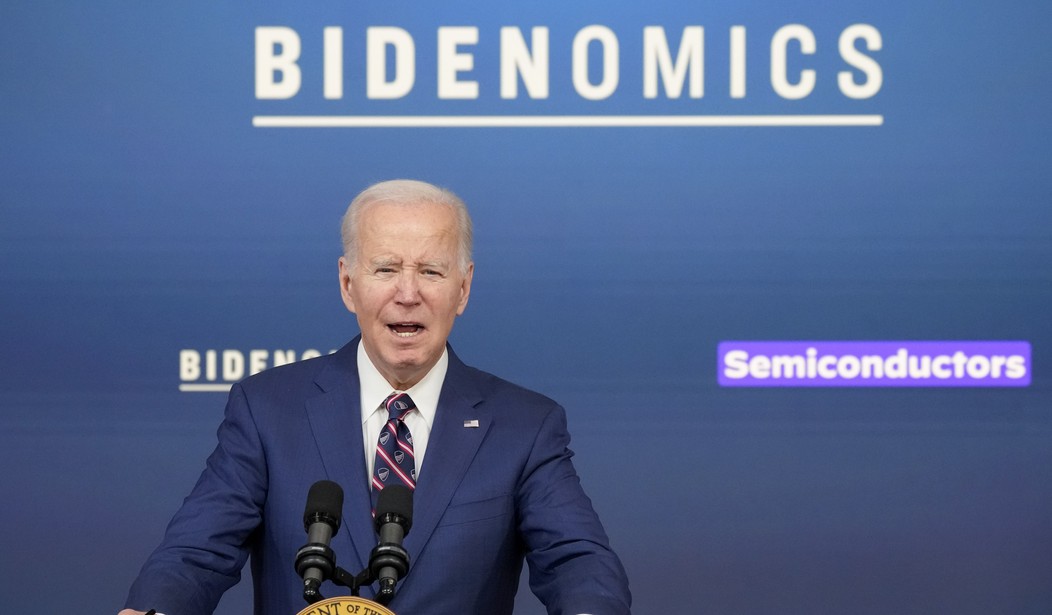The United States Economy grew by 4.9 percent in the third quarter according to the advance estimate for real GDP released by the U.S. Bureau of Economic Analysis on Thursday morning, beating the consensus expectation of 4.3 percent.
As the BEA's release on the third quarter estimate explained:
The increase in real GDP reflected increases in consumer spending, private inventory investment, exports, state and local government spending, federal government spending, and residential fixed investment that were partly offset by a decrease in nonresidential fixed investment...Imports, which are a subtraction in the calculation of GDP, increased.
The increase in consumer spending reflected increases in both services and goods. Within services, the leading contributors were housing and utilities, health care, financial services and insurance, and food services and accommodations. Within goods, the leading contributors to the increase were other nondurable goods (led by prescription drugs) as well as recreational goods and vehicles. The increase in private inventory investment reflected increases in manufacturing and retail trade. Within nonresidential fixed investment, a decrease in equipment was partly offset by increases in intellectual property products and structures.
Compared to the second quarter, the acceleration in real GDP in the third quarter reflected accelerations in consumer spending, private inventory investment, and federal government spending and upturns in exports and residential fixed investment. These movements were partly offset by a downturn in nonresidential fixed investment and a deceleration in state and local government spending. Imports turned up.
Recommended
Notably, the Q3 number covering the period from July through September is more than double the 2.1 percent growth recorded in the second quarter — but it's not necessarily a sign of a strong or healthy economy.
As Job Creators network President and CEO Alfredo Ortiz explained, Thursday's "GDP growth figure is a mirage created by unprecedented deficit spending. The Biden administration racked up a $1.7 trillion deficit over the last year, one of the highest in American history, more than even during the Great Recession, and a ridiculous number for an economy running close to full capacity," he explained.
According to the latest GDP report, government spending grew at its fastest rate — 4.6 percent — since the fourth quarter of 2022.
"This reckless spending juiced the economy, but it hasn't made Americans better off, as it has also caused high inflation to persist," Ortiz added. "Polling shows Americans are historically sour on the economy, as their real wages stagnate due to Bidenflation."
GDP components table, with look-back comparisons: pic.twitter.com/RGycIETl0W
— Liz Ann Sonders (@LizAnnSonders) October 26, 2023
Meanwhile, the surge in consumer spending shows that the Federal Reserve's efforts to spike interest rates to make it more difficult for Americans to buy have not yet caused demand to cool or inflationary trends to reverse after being spurred to 40-year highs by Biden's economic policies.
Strong consumer and government spending — despite the highest interest rates in more than 20 years amid persistent high inflation — came along with new jobs data on Thursday that showed 10,000 new weekly jobless claims, bringing the total to 210,000.
But Americans, whose spending behavior was expected to cool over the summer, did the opposite — consumers stepped up their spending despite economic headwinds. That means the Fed and Chairman Jerome Powell are likely to renew interest rate hikes through the end of the year as attempts to broadly cool consumer spending have proven ineffective so far.
Here's how The Wall Street Journal interpreted the Q3 GDP estimate:
Higher interest rates make it more expensive for Americans to use credit cards and other forms of borrowing, which could encourage consumers to curb spending. Consumers will have less of a buffer for purchases if they continue to draw down their savings and resume paying federal student loans. Prolonged war in the Middle East and labor strikes in the U.S. could put upward pressure on inflation via higher energy and auto prices, which would eat into Americans’ spending power.
A slowdown in consumer spending would weigh on overall growth because it accounts for most of U.S. economic output.
“It would be very surprising if consumption growth remains this strong in the fourth quarter,” said Andrew Hunter, deputy chief U.S. economist at Capital Economics. “There’s room for higher rates and various other headwinds to start taking a bit more of a toll.”
With federal spending increasing, however, crushing American consumers with high interest rates is only one piece of the GDP equation — the government must rein in its spending, too, if our inflation-burdened economy is to be turned around.

























Join the conversation as a VIP Member